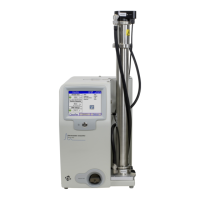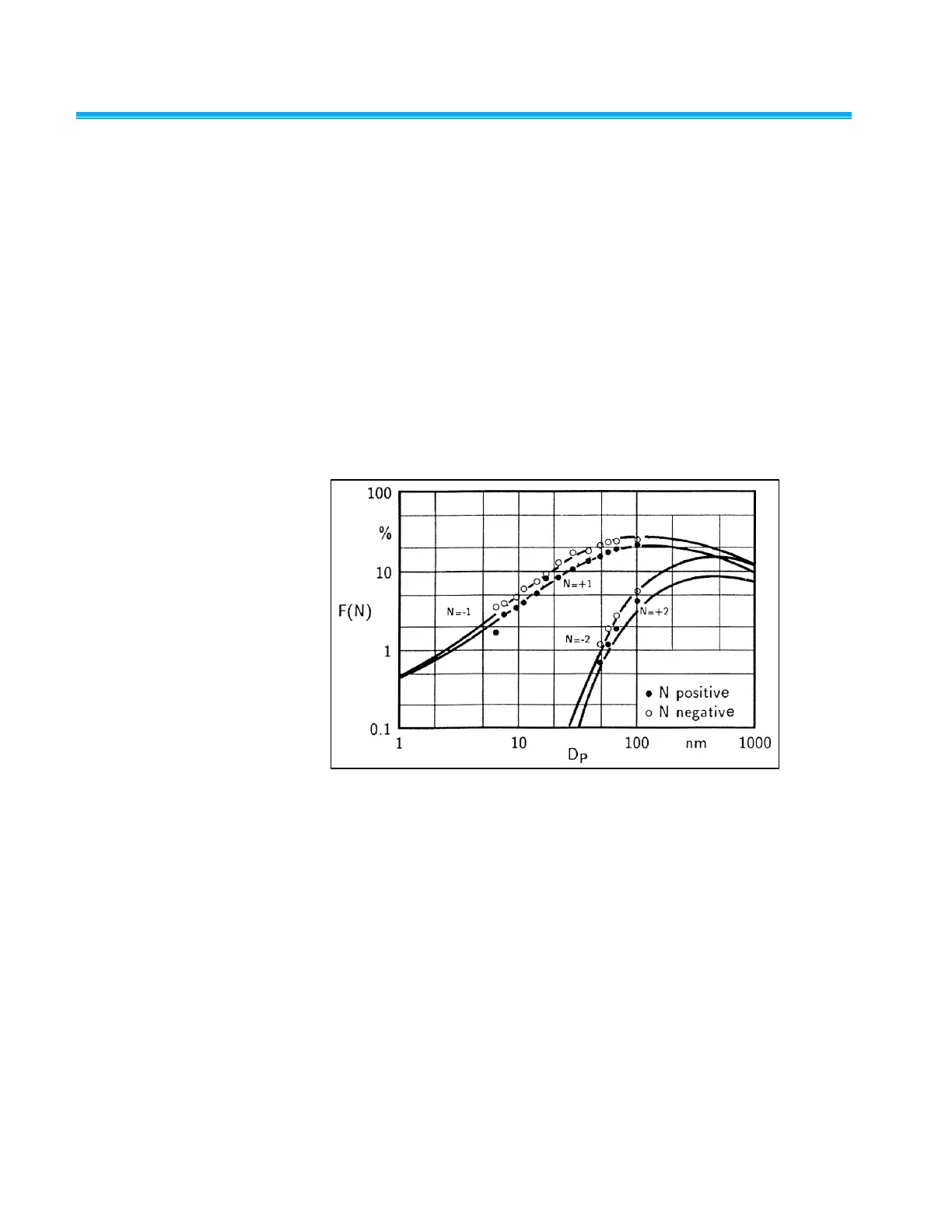B-8 Electrostatic Classifier Model 3082 and SMPS Spectrometer Model 3938
Charging T h eory
The particle charge distribution used in the data reduction for the SMPS
spectrometer is based on a theoretical model developed by Wiedensohler
[1986] and is an approximation of the Fuchs [1963] diffusion theory for
particle sizes in the submicrometer range.
Figure B-5 shows the measured data of Wiedensohler [1986] and
theoretical curves based on the theory of Fuchs [1963] and calculated by
Wiedensohler [1988]. The theoretically determined charge distribution
agrees well with experimental data. It can be seen from the figure that the
fraction of positively charged particles is different from the fraction of
negatively charged particles. Table B-1 lists the fractions of particles in air
that carry -6, -5, -4, -3, -2, -1, 0, +1, +2, +3, +4, +5, and +6 charge units.
This table was calculated based on Wiedensohler [1988] and Kim et al.
[2005]. The fractions in Table B-1 correspond to the fractions used in the
Aerosol Instrument Manager software and in the Classifier 3082 when a
radioactive neutralizer (Model 3077 or 3077A) is installed.
Figure B-5
Bipolar Particle Charge Distribution in Air [Wiedensohler and Fissan, 1988]

